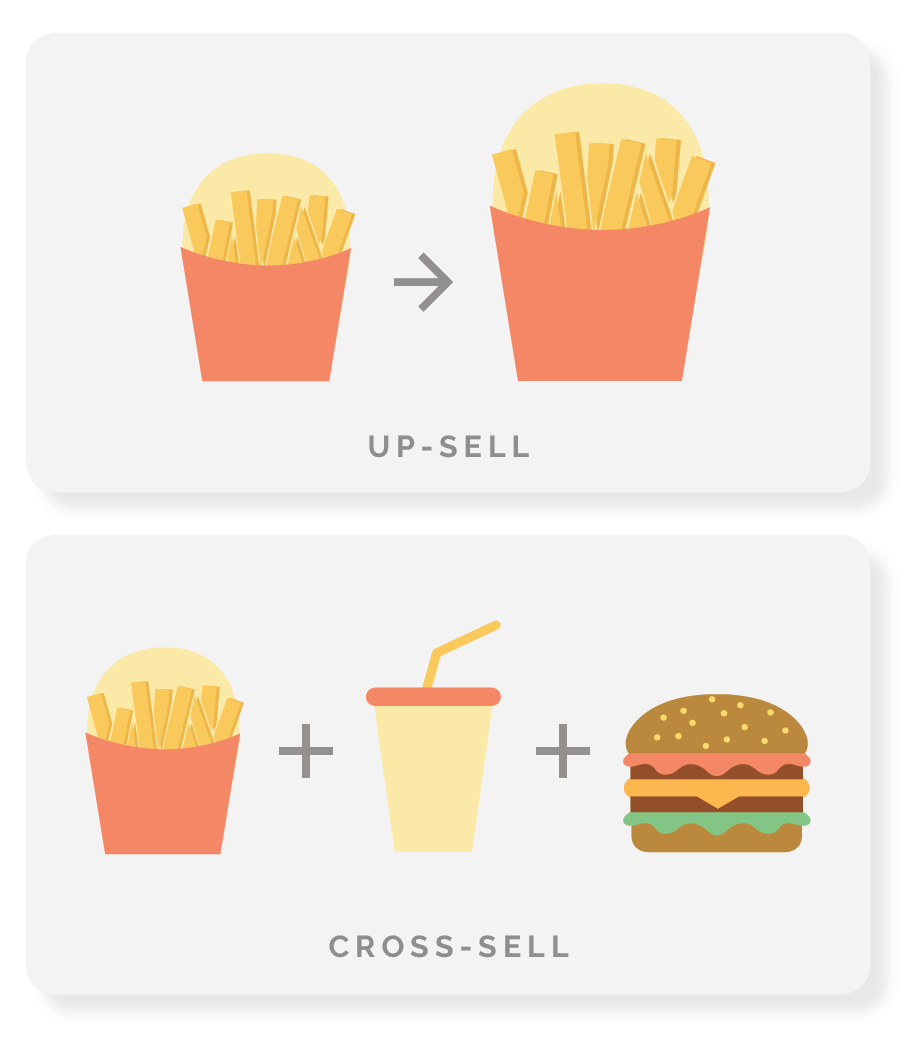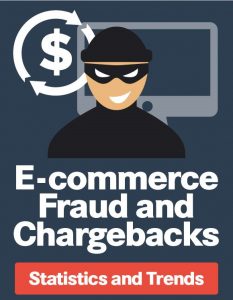— May 29, 2019

“Would you like to supersize that?”
Those six words changed the way business grew revenue forever.
What most don’t know is that McDonald’s wasn’t the first to implement this tactic. A man named David Wallerstein was trying to crack the code of getting more money out of his movie theater patrons. He tried all kinds of things to entice people to buy two bags of popcorn instead of one. Everyone can enjoy one bag of popcorn, however, if you buy two bags, you risk being seen as gluttonous.
Then it hit him – sell a larger bag at a discounted price.
Sales were popping!
In 1968 just after the Big Mac was introduced, Ray Kroc was looking for a director to help sales, and Wallerstein was the obvious choice. With his trick up his sleeve, he quickly implemented it at McDonald’s and the Supersize option was born.
Wallerstein wasn’t done there. He felt he could add on additional revenue to the bottom line by, well, adding on add-ons. Soon, the question “would you like fries with that?” became standard practice to get customers to spend more
“Supersizing” has become the prime example when it comes to upsell strategies. The add-on of fries has become the prime example when it comes to cross-sell strategies.
Upsell and Cross-Sell in B2B Markets
Of course, that’s a highly simplified consumer example of upselling and cross-selling opportunities. This looks much different if you’re selling to other business.
Growth and hitting revenue goals are key objectives for B2B marketers, making expansion an obvious choice. Yet, most B2B teams tend to primarily focus and invest heavily in acquisition strategies to hit pipeline and revenue goals. The challenge is the same dollars invested in acquisition programs do not produce the same returns over time. There is a point of diminishing returns.
To drive the required growth needed for a healthy business, teams need to expand their portfolios to include more than just acquisition programs. That is where post-sale marketing comes into play. Existing customers have already been through the initial acquisition process, so moving forward, they require far less sales and marketing investment.
“Acquiring a new customer is anywhere from five to 25 times more expensive than retaining an existing one” (HBR, 2014)
Existing customer revenue can come from two main sources:
Upsell: A sales strategy to get customers to increase spending by offering more or better versions of your product. For example, in SaaS, it might be expanding the number of seats of software in a company.
Cross-sell: A strategy to get customers to increase spending by offering them new products that are complementary to something they’ve just bought.
Expansion strategies (also called post-sale marketing) are a very effective way to extract more value and drive revenue from existing accounts.
When the strategy is executed well, organizations should see more stickiness with the customer (i.e., higher lifetime value) and their overall annual contract value should increase.
“You’re 60-70% likely to sell to an existing customer, compared to the 5-20% likelihood of selling to a new prospect.” (Marketing Metrics: The Definitive Guide to Measuring Marketing Performance)
Post-Sale Strategies Have Been Tricky to Put into Practice and Scale
While post-sale strategies are powerful for driving additional revenue they are often poorly defined within many companies. Who owns the cross-sell programs and initiatives? How are they tracked?
Clearly defining an internal process and operationalizing post-sale programs can be challenging. Most marketing organizations are chartered only with net-new acquisition, while the responsibility of expansion often falls to another team. However, those teams may not have the skill set or strategy to run upsell or cross-sell programs (not to mention they are really busy). Some companies will also use broad demand generation tactics, which is generally not the right approach for customers.
Additionally, many systems including CRM and marketing automation have been lead-based so it has been hard to track and score marketing initiatives around the current customer base. Because of these limitations, companies often focus on a very limited number of accounts and run extremely manual programs. Scaling expansion efforts across global organizations have been historically very challenging. Lastly, due to system limitations with current technology measurement has also been hard. Which cross-sell initiative is best? Many companies struggle to answer this question.
Challenges:
- Ownership: who owns expansion?
- Strategy: is there a well thought out strategy? Classic demand gen models does not work well with expansion.
- Technology: how can you track post-sales efforts and measure them effectively? Technology limitations also hinder the ability to scale.
How to Get Started with Upselling and Cross-Selling
Now that you understand why you should leverage ABM for post-sales, the next thing you’re probably wondering is how to do it. Here are some basics before we dive into the tactics:
- Set and communicate clear goals around upsell and cross-sell for your accounts. We like to start with a high-level overview like this that is shared across the team.
- Be clear which accounts the teams should focus on. Just as you would in pre-sale ABM, in post-sale ABM you also must be very clear on which accounts you’re going after.
- Communicate and agree on what the accounts will receive (Entitlements). You must be clear which tier of accounts receives a particular level of investment.
- Define which teams act and when. Create hand-off points and sales stages, because we already know our customers, we want to ensure they experience a cohesive set of interactions.
- Be clear about who is running the programs and who is the ‘quarterback’. We recommend assigning an owner for expansion programs. Clearly, multiple teams will be involved and provide input, but clear ownership is key.
Upselling and cross-selling presents a huge opportunity to expand revenue and grow business. Leveraging ABM principles and practices can give your team the tools to execute this strategy and expand accounts more effectively.
That’s why we write an entire book on the subject: How to Execute a World-Class Expansion Strategy with ABM.
Business & Finance Articles on Business 2 Community
(52)
Report Post








